(ECNS) -- The undulating solar panels gleam under the sunlight, stretching as far as the eye can see. Deep within the vast sea of sand, this marvel is known as the "Photovoltaic Great Wall."
Qu Yuwen, both a builder and witness to the "Photovoltaic Great Wall," has recently received a series of encouraging updates regarding the development of his hometown.
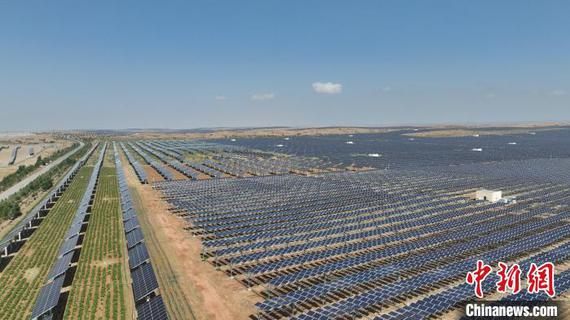
His hometown is located near the Kubuqi Desert in Hanggin Banner, Ordos City, Inner Mongolia Autonomous Region. Kubuqi is China’s seventh-largest desert.
At the recently concluded 2025 Ordos Two Sessions, officials revealed plans to implement 19 engineering projects under the "Three North" Shelterbelt Program (TSFP) in 2025. These initiatives aim to fully connect the northern-edge shelterbelt of Kubuqi, restore 5 million mu (about 333,333 hectares) of desertified land, and achieve the integrated protection and restoration of 10 million mu of forests, grasslands, and wetlands.
"More importantly, we need to continue advancing the integration of desertification prevention and solar power projects," said Qu, a key figure at Elion Resources Group, a company dedicated to combating desertification.
Qu recalled the overwhelming excitement he felt when he first saw the "Photovoltaic Great Wall" casting a deep blue glow over the desert. On Dec. 3, 2023, the 2-gigawatt photovoltaic desertification control project at the Kubuqi Mengxi Base was fully integrated into the grid, marking a milestone as China’s largest single-unit photovoltaic desertification control initiative to achieve grid connection.
According to reports, the 2-gigawatt project in Kubuqi is one of the first large-scale wind and photovoltaic power bases launched under China’s 14th Five-Year Plan (2021-2025). Covering 100,000 mu. Construction began on Oct. 16, 2021.
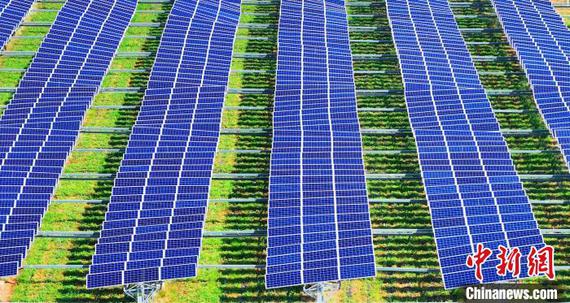
The project is expected to supply 4.1 billion kilowatt-hours of green electricity annually to the Mengxi power grid, saving approximately 1.23 million tons of standard coal and reducing carbon dioxide emissions by about 3.19 million tons per year, along with significant reductions in sulfur dioxide, nitrogen oxides, and particulate emissions.
For generations, those living near the Kubuqi Desert have faced extreme challenges. Wen Maosheng, 61, deeply resonates with these changes.
"When the wind blows, the sand shifts; houses collapse under its weight, forcing residents to relocate. Yet, wild desert plants like Agriophyllum pungens and Allium mongolicum have sustained generations."
Recalling his childhood hardships caused by sandstorms, Wen explained that Ordos City and its affiliated banners had long identified afforestation as a fundamental infrastructure priority. Over the past three decades, large-scale desert restoration efforts have transformed the once-barren landscape into an oasis, particularly during summer.
Since the introduction of photovoltaic desertification control projects in Kubuqi, Wen has frequently heard the term "Photovoltaic Great Wall." Inspired by the initiative, he decided to collaborate with desert control enterprises to implement organic farming beneath the solar panels.
In 2024, Wen leased over 20 mu of land. Considering the conditions under the panels and drawing from his agricultural experience, he chose to grow tomatoes. That year, his yield reached approximately 800 kilogram per mu, generating over 2,000 yuan () per mu at a price of 2 to 3 yuan per 500 gram. "With this income alone, my family's daily expenses are no longer a concern," he said.
"Next year, I plan to lease more land and continue growing tomatoes." Wen believes that under the protection of the "Photovoltaic Great Wall," residents are not only achieving prosperity but also benefiting from the enthusiastic support of local authorities.
According to the Hanggin Banner government, the region, as a key battleground in addressing desertification along the Yellow River’s "sharp bends," is fully committed to integrating desertification control via wind and photovoltaic energy projects in 2024. Accelerated construction of the "Photovoltaic Great Wall" is a crucial component, with the Hanggin Wind-Solar-Thermal-Energy Storage Ecological Management Project a prime example.
This initiative is currently China’s largest single-unit project designed with ecological governance as its foundation. Recently, the project achieved its first grid-connected power generation, symbolizing Hanggin Banner’s ambitious efforts to expand the "Photovoltaic Great Wall" concept across the Kubuqi Desert.

However, this journey is far from over.
"In the southern Kubuqi Desert, the Shuofang New Energy Mega Base has a planned total installed capacity of 16 gigawatts, including 8 gigawatts of photovoltaic power spread across 480,000 mu. Currently, the first and second phases of the 2-gigawatt photovoltaic pilot project are under rapid construction," said Li Jinyu, on-site manager of the Shuofang New Energy Base project in Hanggin Banner.
"During the implementation of photovoltaic desertification control, we prioritize engaging local farmers and herders, enabling them to generate income through land leasing, panel installation and maintenance, and agricultural activities under the panels," said Yang Jinyao, director of the Forestry and Grassland Development Center at Hanggin Banner Forestry and Grassland Bureau.
Ma Meng, a direct beneficiary of the Shuofang New Energy Base project, shared his experience: "After trees and grass were planted in the photovoltaic zone, the desertified land along the Yellow River was stabilized. I leased my farmland and secured a maintenance job at the photovoltaic power plant, earning over 5,000 yuan per month."
According to the Hanggin Banner Energy Bureau, the region plans to implement new energy projects totaling 3.727 gigawatts in 2025. These efforts aim to double the energy economy, establish a model for national new energy development, promote photovoltaic desertification control, and enhance local incomes—all while contributing to the success of the TSFP.
Inner Mongolia economist Gai Zhiyi emphasized the broader impact of these initiatives: "Building the 'Photovoltaic Great Wall' in the Kubuqi Desert through technological innovation is significant because it harmonizes ecological restoration with economic prosperity. It is also an outstanding practice of the philosophy that 'clear waters and green mountains are as valuable as gold and silver.'"








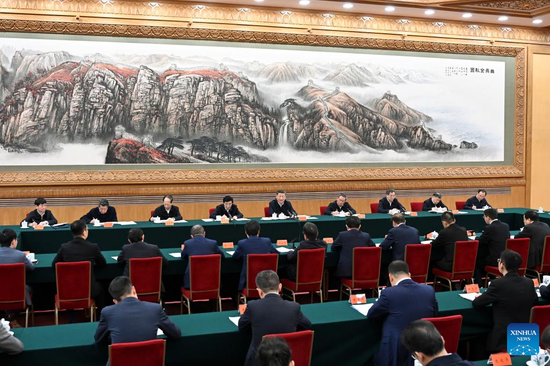



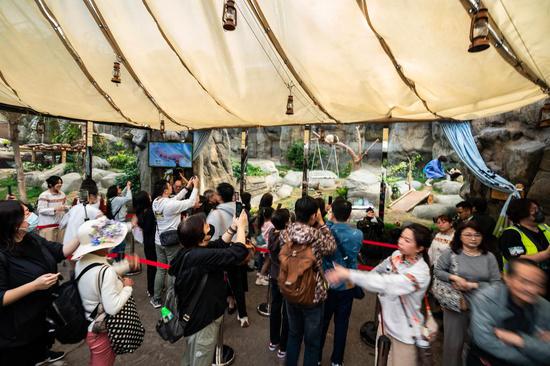

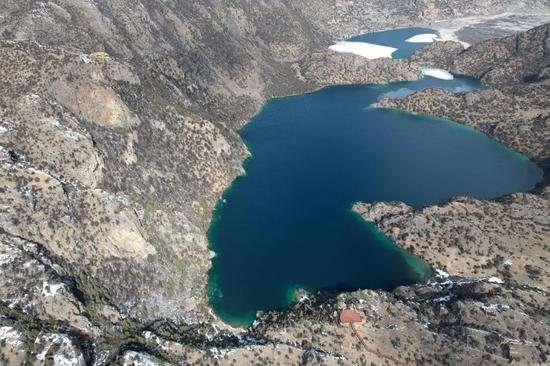
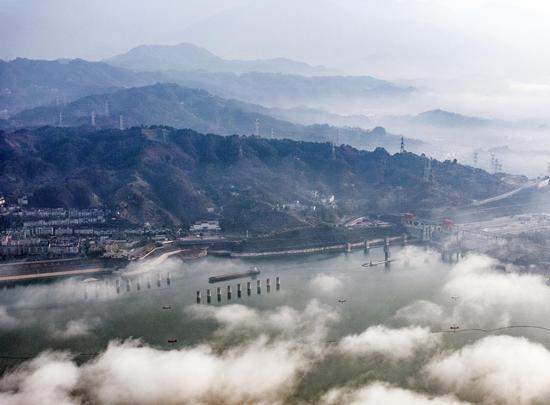
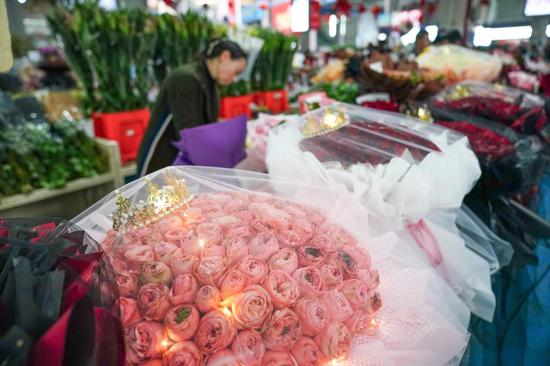








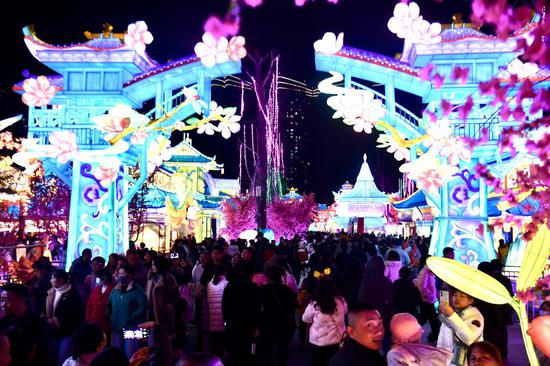










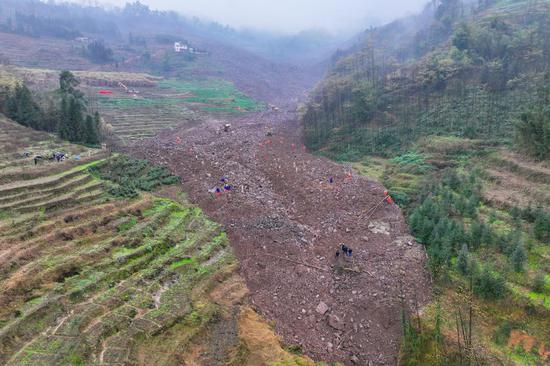













 京公网安备 11010202009201号
京公网安备 11010202009201号